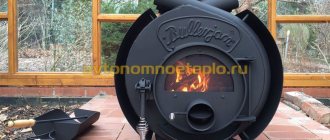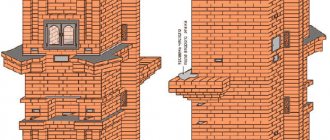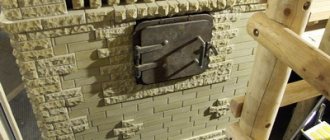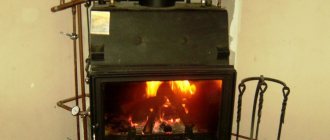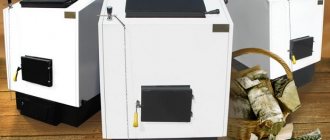Stove heating is considered one of the most common, economical and simple ways of autonomous heating for private homes .
Especially for heating large rooms, well-known manufacturers have developed many thoughtful models of wood-burning stoves for every taste and budget.
Modern devices are safe to use and do not require lining or strengthening the foundation, which means that the user will not have any problems during the installation and operation of heating equipment.
Page navigation:
How to choose a wood stove for your home?
The range of wood-burning stoves impresses even experienced buyers, so the choice of equipment should be taken with full responsibility, paying special attention to a number of the most important technical parameters.
Keep in mind! When choosing a suitable device for your home or garden, you must consider:
- maximum power. The power of the unit should be sufficient to fully and quickly heat the building. The optimal indicator can be determined from the ratio of 1 kW per 10 sq.m. area +10-15% reserve. This is an ideal option for high-quality heating;
- heated volume. Some models of wood stoves are tied to a certain volume, while other devices allow you to vary the power by changing the intensity of combustion. In the second case, it is important that the calculated value for the heated room falls within the range of the heated volume;
- combustion chamber volume. A spacious firebox will be able to accommodate a fairly large amount of firewood, so the owner will not have to add it often. According to reviews, working with a device equipped with a small combustion chamber is less convenient;
- heat transfer method. Based on the method of heat transfer, wood-burning stoves are divided into convection stoves and models with a liquid heat exchanger. The best solution would be a unit with a water circuit, since it can heat a large room more efficiently and quickly;
- connection to the chimney. The device can be connected from behind or from above, but in some models this option is not available at all. Many users choose a universal option, in which the unit can be connected both from behind and from above, while the alternative connection will be plugged. Experts do not recommend purchasing equipment without connectivity;
- material. The structure can be made of cast iron, steel, ceramics or brick. If a buyer is looking for a compact device, a cast iron model would be a good solution. For quick heating, a steel unit is suitable, but if design is important, you should give preference to a ceramic stove. The most reliable and expensive option are brick devices;
- dimensions of the structure. When choosing a unit, it is important to remember that it should not take up too much space in the room. On average, devices are produced with a width of 51-105 cm, a length of 30-80 cm and a depth of 40-75 cm. But a wide range of models allows you to choose a device based on your own preferences.
Efficient stove for home
Dmitry Semkin. This topic is not directly related to construction, but the stove, with which we have been wintering for two years now, seems to be quite successful. The old house we bought was not in excellent condition; it needed cosmetic repairs and had problems with the stoves. Two old stoves took up extra space. The task is to disassemble the stoves, prepare the foundation and build a compact and efficient stove. The deadlines are running out, the cold weather is coming, experience - one homemade stove in the country 25 years ago.
The eyes are afraid, but the hands are doing. The main thing is to find a normal option as a basis. I searched the Internet, but didn’t find anything suitable, so I decided to create an original one.
Products for inventors. Sale up to 50%
